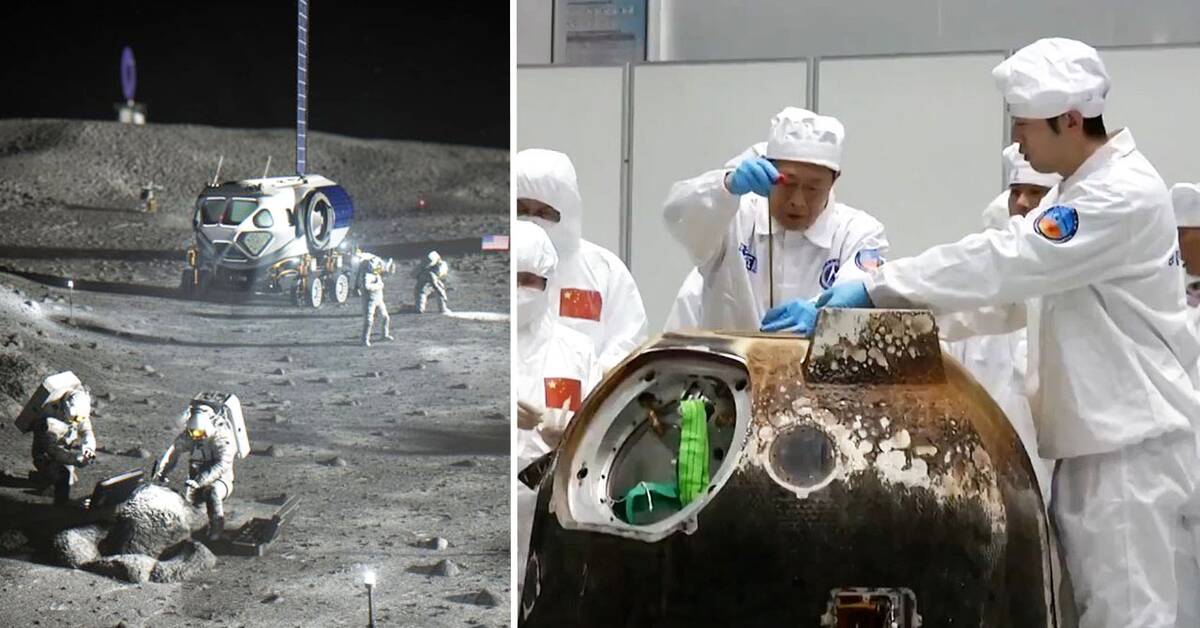- It is far too expensive to take oxygen from the soil.
If you want a long-term presence on the moon, you must be able to produce oxygen on site, says Olle Norberg, who is director of the Institute of Space Physics.
Chinese physicists at Nanjing University have now investigated a way for taikonauts and astronauts to become self-sufficient in oxygen on the moon.
And that with the help of the moon's frozen water, carbon dioxide from the astronauts' exhaled air and moon sand.
The results are published in the scientific journal Joule report.
Moon sand in the cargo
In December 2020, the Chinese spacecraft Chang'e 5 landed on Earth after a brief visit to the moon.
It carried 1.7 kg of moon sand in the cargo.
The sand turned out to be rich in titanium and iron.
These are substances that can act as catalysts to separate hydrogen and oxygen atoms in ordinary water by so-called electrolysis.
For the method to work, access to water is required, and today researchers are fairly certain that there is water ice at the moon's south pole.
Extraterrestrial photosynthesis
The Chinese physicists experimented with moon sand, water and carbon dioxide and found that the energy coming from the sun's rays on the moon was enough to produce oxygen.
They call the method an extraterrestrial photosynthesis and now hope to test the method on one of China's future manned space missions to the moon.
Want to build moon base
China's space agency (CNSA) is cooperating with Russia on a permanent base on the moon.
In an interview in April this year, CNSA's Deputy Chief Wu Yanhua calls for international cooperation in the Chinese news channel CGTN:
- We hope to develop an international base on the moon.
Among other things, it is about finding a new home outside the world and then we must work together across national borders.
The US space agency Nasa plans to return to the moon and plans to send astronauts there again in 2025 within the so-called Artemis program.
In 2028, Nasa plans to start building a lunar base.

